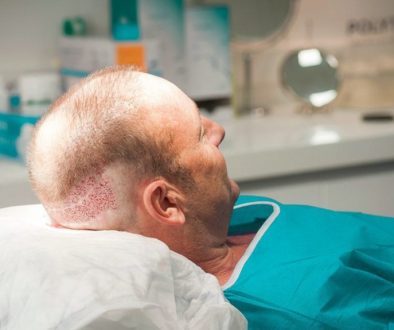Reducing Tension with a Two-Layer Closure For a Better Hair Transplant Scar
This insightful hair transplant article was written by Dr. Bernardino Arocha of Houston, TX who is one of our recommended hair restoration physicians.
 Whenever hair replacement surgery is performed, there is always a scar. Scars are the body’s attempt to heal. However, scars respond with increased laying down of collagen (scar tissue), to tension vectors applied to the wound margins. In a two-layer closure, the first layer does most of the work to minimize tension forces on the superficial layer, thereby producing minimal scars. The other principle in making scars nearly invisible applied here, is the use of follicle sparing suturing techniques. These techniques avoid the strangulation of the hair follicle, interdigitating between the follicles and remaining very superficial. Note that I prefer to avoid the use of tricophytic closure, unless this will be the last surgery. The reason is that the tricophytic closure causes a distortion of the hair architecture along the scar area, which will decrease the donor yield.
Whenever hair replacement surgery is performed, there is always a scar. Scars are the body’s attempt to heal. However, scars respond with increased laying down of collagen (scar tissue), to tension vectors applied to the wound margins. In a two-layer closure, the first layer does most of the work to minimize tension forces on the superficial layer, thereby producing minimal scars. The other principle in making scars nearly invisible applied here, is the use of follicle sparing suturing techniques. These techniques avoid the strangulation of the hair follicle, interdigitating between the follicles and remaining very superficial. Note that I prefer to avoid the use of tricophytic closure, unless this will be the last surgery. The reason is that the tricophytic closure causes a distortion of the hair architecture along the scar area, which will decrease the donor yield.
Two-layer closure is well described surgical technique, trico-sparing techniques are not always employed. Also keep in mind that tension vectors, whatever the origin, applied to the scar that has not matured will stretch or augment the scar. I refer you to the article “Post-surgical scars in hair restoration surgery” , which can be found on my web site under articles. A scar can take between 6-12 months to mature.
Bernardino A. Arocha M.D.
—
Bill
Associate Publisher
Technorati Tags: hair transplant, hair replacement, tricophytic closure, hair restoration



